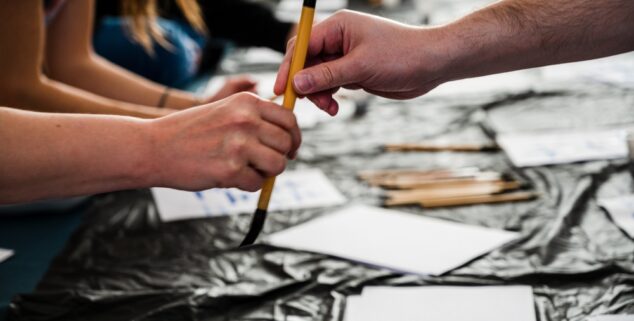News
California has money for school arts education, but not enough teachers
 Image by Robert Petrovic via Shutterstock
Image by Robert Petrovic via ShutterstockCalifornia’s public schools are getting a huge new infusion of funding for arts education starting this fall, but a teacher shortage and other factors may slow progress in offering classes to students.
While an estimated 15,000 new arts teachers are needed statewide, less than 5,000 are currently credentialed in music, dance, theater, visual arts and media arts, said Allison Gamlen, visual and performing arts coordinator for the San Mateo County Office of Education.
“It’s going to take some time to recruit and train teachers,” said Tom DeCaigny, executive director of Create California, an advocacy organization for arts education. “We’re all eager to see students have access to the arts and have a well-rounded education.”
Schools getting the money will also have to figure out how to find time for arts classes in a day packed with academics and locate facilities that can house the courses.
Proposition 28, which voters approved in November, requires that the state provide funding for arts education equal to 1 percent of the state’s budget for schools and community colleges every year. This is estimated to be about $940 million for kids in public preschools through grade 12 this year, considered a “historic” level of funding by arts advocates.
Arts education classes can mean instruction in musical instruments, musical composition, painting, sculpture, craft arts, photography, animation, web and graphic design, computer coding, script writing, drama productions, costume design, film or video or other types of arts. School principals will decide the classes offered based on the needs and desires of their communities.
A significant factor in the teacher shortage is that as of now, only 11 percent of California schools are providing arts education required by the state’s education code, DeCaigny said. With the lack of job openings for arts teachers, there has been little incentive for people to get arts credentials.
Though the measure doesn’t require that schools hire arts educators that have an arts teaching credential, Michael Despars, past president of the California Educational Theatre Association, said he hopes they do.
He believes it’s not enough for an arts teacher to have knowledge about their particular art. He said they should have training in classroom management, pedagogy and education standards.
Moreover, his group worked hard to get theater and dance teaching credentials reinstated in 2016. For years before then, those wanting to teach theater could only get an English credential and those wanting to teach dance could only get a physical education credential.
“We are trying to hold true and make sure our credentials mean something,” he said.
While an estimated 15,000 new arts teachers are needed statewide, less than 5,000 are currently credentialed in music, dance, theater, visual arts and media arts.
Seth Mausner, director of the Harmony Project Bay Area, which offers after-school instruction in stringed instruments in Daly City and Oakland, hopes to help provide teachers to schools but doubts that many will be credentialed at least right away. Many of the violin, viola and cello instructors he works with are freelance musicians who have experience teaching private lessons and playing gigs but don’t have teaching credentials.
He hopes to convince some of the schools to add a middle school string teacher. “It would not cost that much for us to provide a non-credentialed teacher and they could work during the school day,” he said.
Prop. 28 requires that at least 80 percent of the funding be used to hire new “certificated or classified” staff to provide arts education instruction with the remainder to be used for training, supplies and partnerships with arts education organizations. Schools have three years to spend each year’s allocation.
The money given schools depends on attendance and the number of low-income students (those with more on reduced lunch will get more funding). Potential funding amounts vary widely. For example, one tiny rural district in the Sierras that serves under 100 K-12 students will likely get less than $17,000, while San Mateo County, which has more than 86,000 students, will get $12 million, Gamlen said.
Small schools may need to wait until their money builds up to hire a teacher, or they might want to partner with other schools to share an instructor, Gamlen said. On the other hand, bigger well-funded schools may not be able to hire any teachers at all because they are already fully staffed (Prop. 28 requires that the money be used for new programs), she said. Instead, they might apply for waivers and use the money to buy new ballet barres, upgraded kilns or other supplies.
Letty Kraus, director of California County Superintendents Statewide Arts Initiative, said that it is to be expected that there will be growing pains in adjusting to the funding. As far as dealing with the teacher shortage, she said it might be a good idea at some point to organize a statewide public relations campaign to encourage more people to become arts teachers. The main thing to remember is that for the first time in a long time, there is a sustainable funding source for arts education.
“The voters have spoken and they have shown us that they care about the arts in a very meaningful way,” she said. “They have shown us by saying here’s the money for it. More than a challenge, this is a great opportunity.”
Want to see more stories like this? Sign up for The Roundup, the free daily newsletter about California politics from the editors of Capitol Weekly. Stay up to date on the news you need to know.
Sign up below, then look for a confirmation email in your inbox.

Leave a Reply